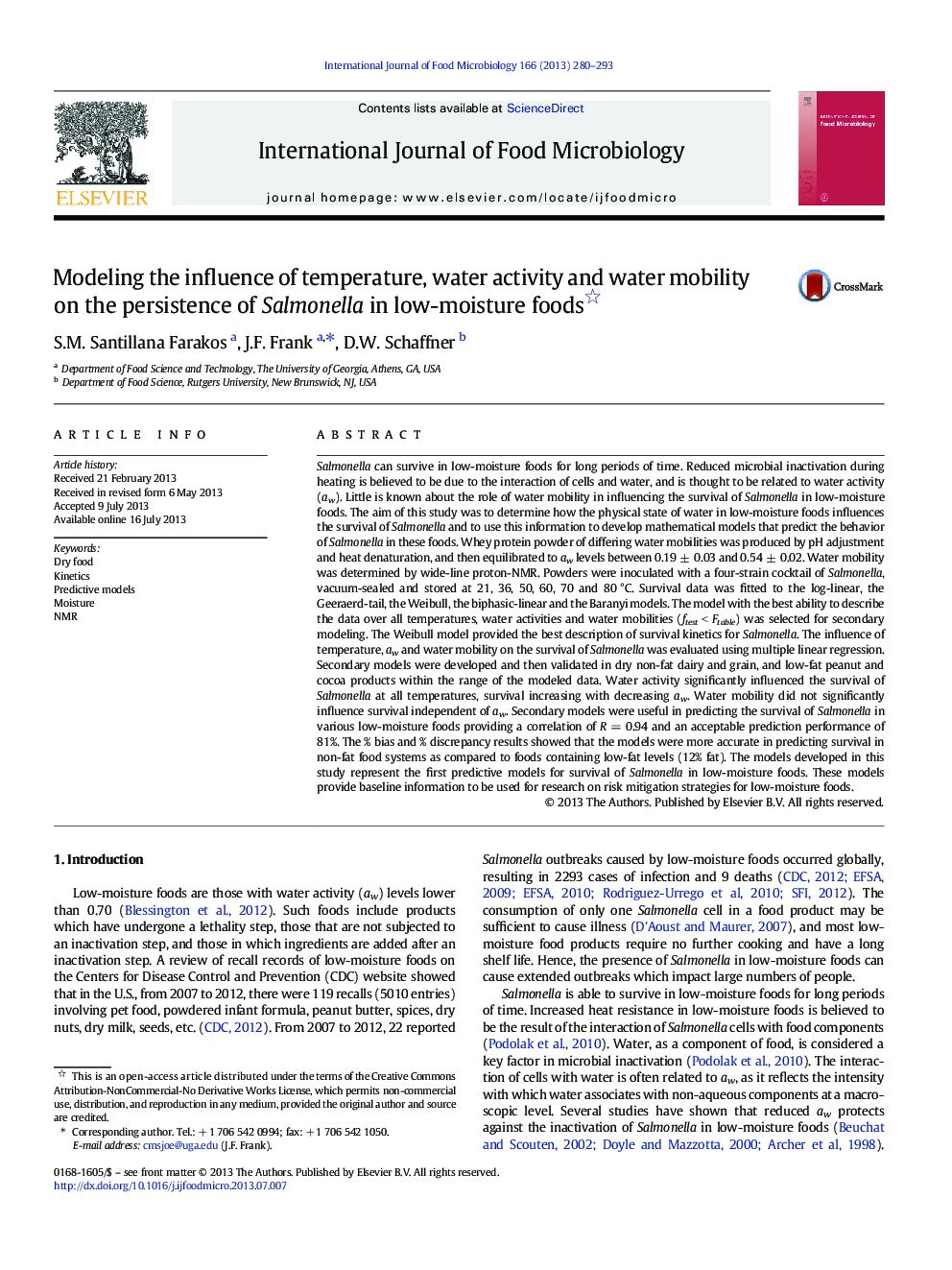| کد مقاله | کد نشریه | سال انتشار | مقاله انگلیسی | نسخه تمام متن |
|---|---|---|---|---|
| 6290156 | 1616618 | 2013 | 14 صفحه PDF | دانلود رایگان |
عنوان انگلیسی مقاله ISI
Modeling the influence of temperature, water activity and water mobility on the persistence of Salmonella in low-moisture foods
ترجمه فارسی عنوان
مدل سازی تأثیر دما، فعالیت آب و تحرک آب بر پایداری سالمونلا در غذاهای کم رطوبت
دانلود مقاله + سفارش ترجمه
دانلود مقاله ISI انگلیسی
رایگان برای ایرانیان
کلمات کلیدی
موضوعات مرتبط
علوم زیستی و بیوفناوری
علوم کشاورزی و بیولوژیک
دانش تغذیه
چکیده انگلیسی
Salmonella can survive in low-moisture foods for long periods of time. Reduced microbial inactivation during heating is believed to be due to the interaction of cells and water, and is thought to be related to water activity (aw). Little is known about the role of water mobility in influencing the survival of Salmonella in low-moisture foods. The aim of this study was to determine how the physical state of water in low-moisture foods influences the survival of Salmonella and to use this information to develop mathematical models that predict the behavior of Salmonella in these foods. Whey protein powder of differing water mobilities was produced by pH adjustment and heat denaturation, and then equilibrated to aw levels between 0.19 ± 0.03 and 0.54 ± 0.02. Water mobility was determined by wide-line proton-NMR. Powders were inoculated with a four-strain cocktail of Salmonella, vacuum-sealed and stored at 21, 36, 50, 60, 70 and 80 °C. Survival data was fitted to the log-linear, the Geeraerd-tail, the Weibull, the biphasic-linear and the Baranyi models. The model with the best ability to describe the data over all temperatures, water activities and water mobilities (ftest < Ftable) was selected for secondary modeling. The Weibull model provided the best description of survival kinetics for Salmonella. The influence of temperature, aw and water mobility on the survival of Salmonella was evaluated using multiple linear regression. Secondary models were developed and then validated in dry non-fat dairy and grain, and low-fat peanut and cocoa products within the range of the modeled data. Water activity significantly influenced the survival of Salmonella at all temperatures, survival increasing with decreasing aw. Water mobility did not significantly influence survival independent of aw. Secondary models were useful in predicting the survival of Salmonella in various low-moisture foods providing a correlation of R = 0.94 and an acceptable prediction performance of 81%. The % bias and % discrepancy results showed that the models were more accurate in predicting survival in non-fat food systems as compared to foods containing low-fat levels (12% fat). The models developed in this study represent the first predictive models for survival of Salmonella in low-moisture foods. These models provide baseline information to be used for research on risk mitigation strategies for low-moisture foods.
ناشر
Database: Elsevier - ScienceDirect (ساینس دایرکت)
Journal: International Journal of Food Microbiology - Volume 166, Issue 2, 2 September 2013, Pages 280-293
Journal: International Journal of Food Microbiology - Volume 166, Issue 2, 2 September 2013, Pages 280-293
نویسندگان
S.M. Santillana Farakos, J.F. Frank, D.W. Schaffner,
